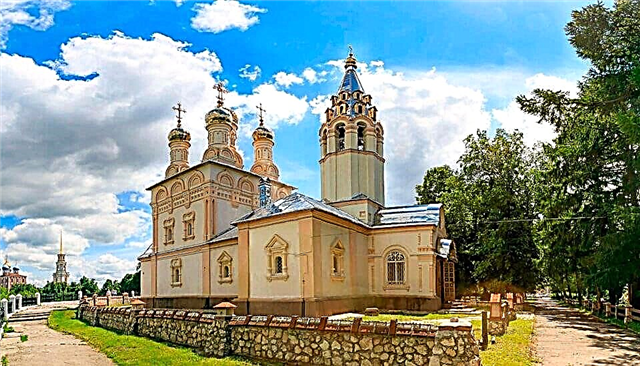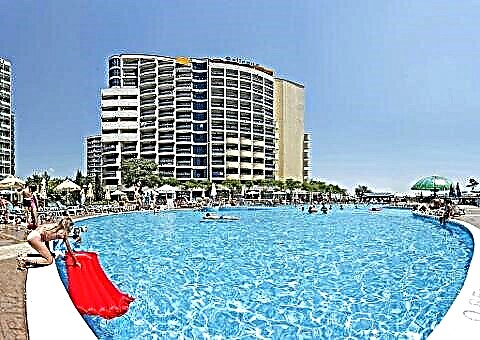At any time of the year, residents of Rome, tourists from all over the world strive to see the most beautiful square in Rome, the famous Piazza del Popolo. Admire the architectural structures that surround the square, admire the amazing gardens of the Pincho Hill hanging over it. Listen to the sounds of water cascades coming from an old aqueduct. It seems that even now the steps of the soldiers of the Roman legions are heard, leaving for another victory along the ancient Flaminia road. Countless times this square has been depicted on their canvases by famous artists of different times. A huge obelisk, two symmetrical churches have long become symbols of the square, keeping the eternal secrets of the history of Rome.
History
It is generally accepted that the decoration of the square took place in the 16th century. Rome began to expand rapidly. There were problems with the restoration of streets, water supply to the city. Pope Sixtus V issued a decree implementing a new approach to urban planning. It was based on the creation of a unique road network connecting the rolling hills of Rome with the main trade routes. The original project by Domenico Fontana, called the radial trident, was used by different countries (France, England, Italy). The thinking of several generations of architects was based on this idea. The three-beam layout was widely used in the architecture of European cities, for example, in St. Petersburg, Versailles.
From the square where the inhabitants of the city gathered for trade, terrible executions were carried out, three roads of the city begin: Babuino, Corso, Ripetta. It is easy to walk along Babuino Street to the famous Spanish Steps, Piazza di Spagna. Rue Ripetta runs in the direction of the ancient port of Ripetta, passing by the Mausoleum of Augustus. Corso connects Rome with the Flaminia road.
At the point of convergence of the streets, there are two churches created by C. Rainaldi, considered a pearl of the Baroque style. The name of the Piazza del Popolo square is associated with the translation of the Latin word Populo or people. Perhaps another version of it, the poplar, is also true. Earlier, a grove of poplars was green here, among which was the tomb of the emperor Nero.
Description
At the beginning of the 9th century, the square received its present appearance. There is still the ancient church of Sant Maria del Popolo, twin churches, statues, fountains and an ancient obelisk on it. On the suggestions of Giuseppe Valadier, the main elements of the square were created around 1812. At the same time, a garden was laid on the territory of the hill, statues and fountains appeared. At the base of the famous Egyptian obelisk, a fountain with round bowls and lions started working. The square was surrounded by a balustrade, decorated with a sculptural group in the form of allegories of the seasons.
The rectangular square, lined with numerous shopping rows, turned into a beautiful ellipse surrounded by the fortress wall (built by the emperor Aurelian in 273) of ancient Rome. The area, which can accommodate up to 65 thousand people, has become a pedestrian zone, closed for the passage of any transport. You can admire it from the panoramic platform built on the Pincho Hill. The famous staircase leads to it, which has become an important element of the square. The architectural organization of Piazza del Popolo, skillful use of the relief, original paved roads, fountains, sculptures have created a single urban ensemble of complex composition, revealing the history and beauty of the city.
Sights
Previously, one could see here only the gate in the fortress wall, called Flaminia. The ancient Basilica of Santa Maria del Popolo and the fountain, from which the inhabitants took water for domestic needs, watered the horses. Centuries have supplemented the square with masterpieces of architecture, innovations necessary for the development of life. Its construction was carried out for public money, which is reflected in the name of the square. Now the famous Roman square amazes passers-by with the beauty of the following attractions:
Gate del Popolo

At the gate there is an ancient pilgrimage path called the Ravenska, and later the Flaminia road. In ancient times it was an important route of the northern direction of Rome through Rimini to the Adriatic. The construction of the road began in the time of Gaius Flaminius in 220 BC. Namely, a large number of travelers came to Rome through it. The appearance of the gate has changed. The last reconstruction was carried out by Bernini on the occasion of the arrival of the Swedish queen in 1655.
Basilica of Santa Maria del Popolo
The appearance of the basilica is associated with legends about the life of the emperor Nero. Previously, the mausoleum of Domizzi Enobarbi stood here. It contained a tomb with the body of a sinister emperor. By order of the Pope. Paschalia II the remains of Nero were removed from the tomb, thrown into the Tiber River, and the mausoleum was destroyed. By this they tried to destroy the ghost, remove negative legends about this place. A small chapel was built on the site of the mausoleum in 1099. The basilica acquired its modern look in the 15th century. The church contains two works by Caravaggio. These are "The Crucifixion of St. Peter", "The Transfiguration of Paul".
Twin churches

Just a close look at the churches of Santa Maria Miracoli, Santa Maria Montesanto. will indicate their differences, although they were conceived with the same architecture. Kors Street begins between the buildings. Churches were built under the leadership of Carlo Rainaldi. In order for both buildings to fit into the available space, the dome of one of the churches had to be given an oval shape by changing the number of its edges.
Obelisk Flaminia

The center of the square is decorated with a high landmark of Rome, an ancient Egyptian obelisk. It appeared here as a trophy brought from Egypt in 10 BC. He towered in Heliopolis near the temple to the god Ra. Having moved to Rome, the 24-meter building stood in the Circus Maximus. Gradually, the stele collapsed, collapsed. At the direction of the Pope, the famous architect Domenico Fontana collected the wreckage and restored the obelisk in the square.
The stone giant is almost 3.5 thousand years old. It shows an ancient inscription praising the pharaoh Ramses. In 1824, a fountain of four lions was built around the obelisk. Marble lions are exact copies of antique figures. Original steps were built to the obelisk and fountains, which are often used for short-term rest.
Fountain della Dea di Roma

A Roman goddess wearing a warrior's helmet is located in the central part of the sculptural group. At her feet, figures of men are visible, symbolizing the rivers Tiber, Anyone, as well as a she-wolf (nurses of babies Romulus, Remus). The fountain is located at the base of the hill. Symmetrically to this fountain there is an architectural ensemble depicting Neptune surrounded by tritons. The owners of the square are tourists, residents of the country. For them, a large number of cozy cafes and restaurants function on it. On holidays, a huge stage for concerts is set up in the central part of the square. Turning onto Corso Street, you find yourself in a paradise for shopaholics. On the site, 1.5 km long, there are boutiques of various companies, filled with goods.
Where is it and how to get there
Piazza del Popolo is located in the historic center of the city. Next to it is the station of the red line of the metro "A". The distance to the station can be walked in 10 minutes. There is a taxi, shuttle minibus. All the ancient roads of Rome lead to its beautiful square.











